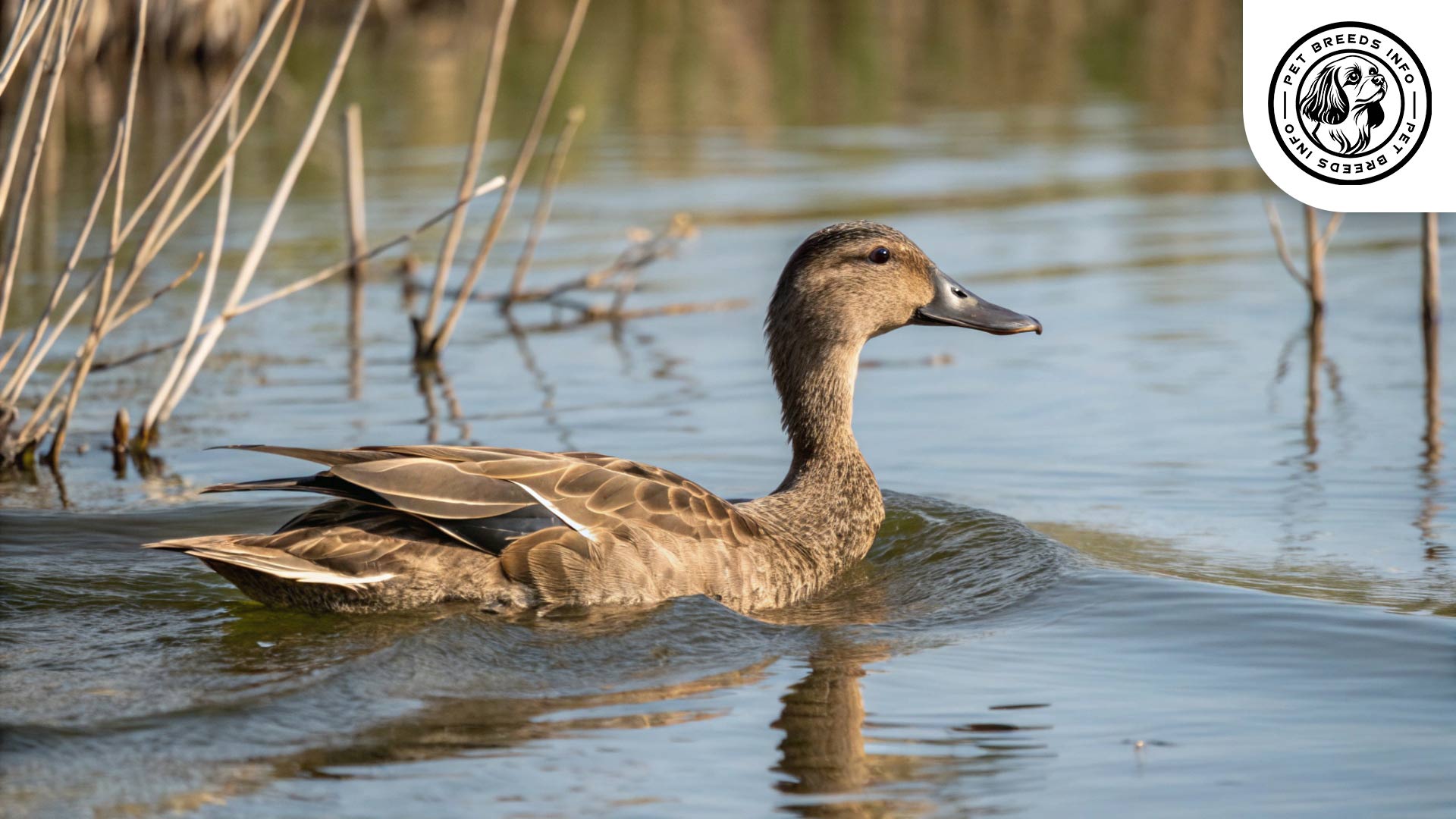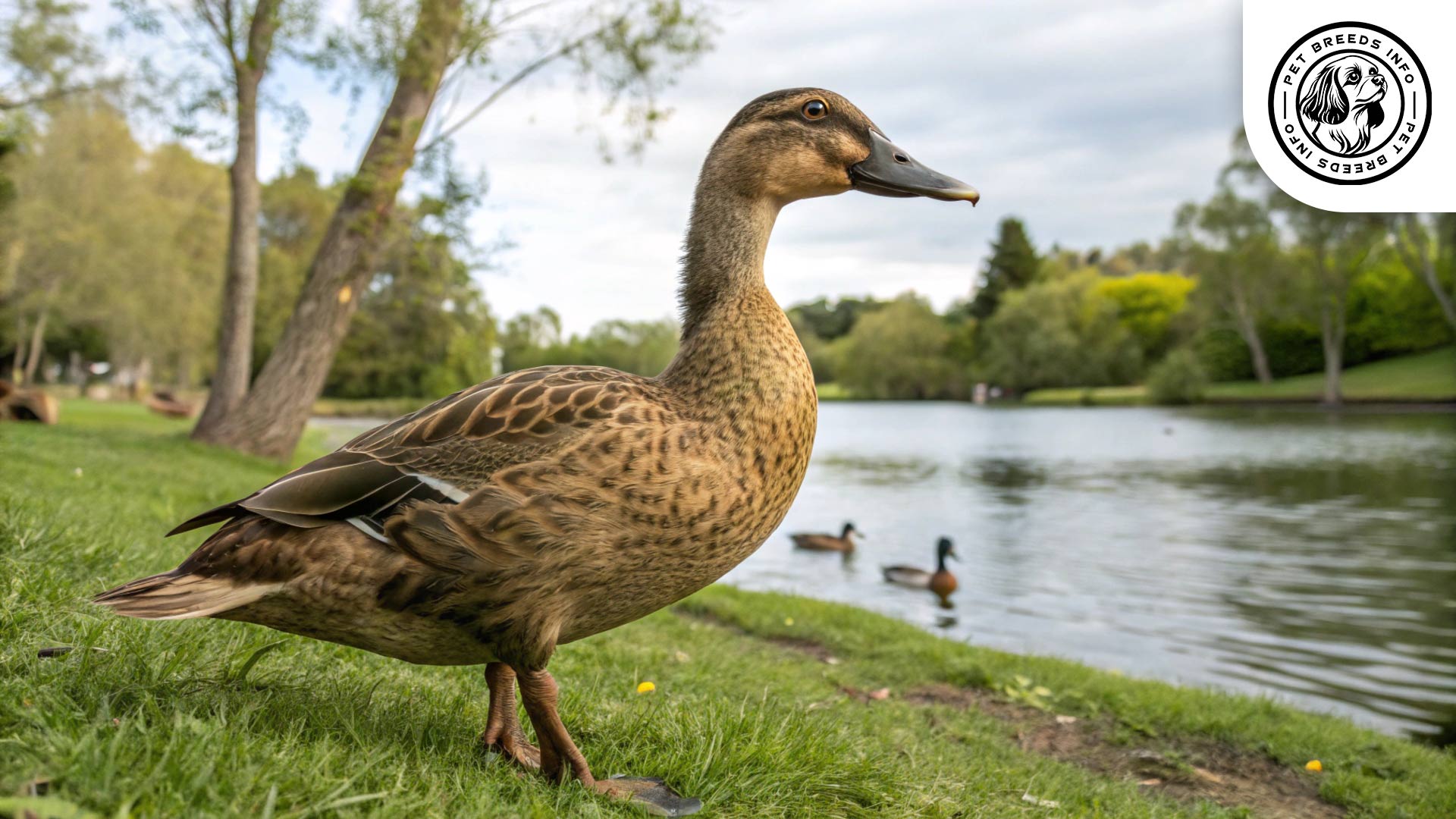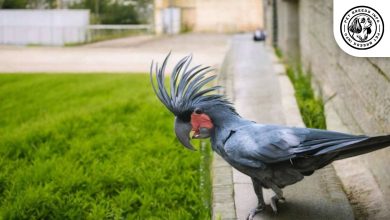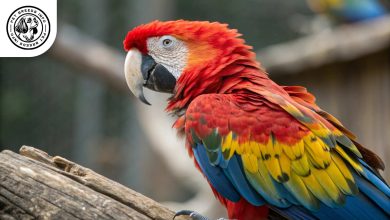Khaki Campbell Duck Breed: Personality, Lifespan, Food & Care
General Introduction of the Breed
The Khaki Campbell duck is a popular domestic duck breed known for its excellent egg-laying ability. It originated in England and was developed by Adele Campbell in the late 19th century. This breed was created by crossbreeding Mallards, Rouen, and Runner ducks to produce a hardy, high-producing egg layer.
Table of Contents
| Common Name: | Khaki Campbell duck |
| Scientific Name: | (Not explicitly mentioned in the text, but likely Anas platyrhynchos domesticus) |
| Origin: | England |
| Size: | Medium-sized (Males: 4.5–5.5 lbs, Females: 4–4.5 lbs) |
| Lifespan: | 8 to 10 years |
| Talking Ability: | Not applicable (ducks do not “talk” in the human sense) |
| Colors: | Khaki |
| Noise Level: | Not explicitly mentioned, but typical duck sounds (quacking) |
| Social Behavior: | Can coexist with other ducks and poultry, may be wary of strangers |
Physical Characteristics
Khaki Campbell ducks are medium-sized, with males weighing around 4.5–5.5 lbs (2–2.5 kg) and females weighing approximately 4–4.5 lbs (1.8–2 kg). They have a khaki-colored plumage, which gives them their name. Their feathers are smooth, dense, and water-resistant.
These ducks have dark brown to hazel-colored eyes. Their bills are typically olive green in drakes (males) and darker in hens (females). The tail is moderately long and slightly curved. Males may have a more pronounced curl in their tail feathers.
Read More: Yellow-faced Parrotlet Bird
Personality and Temperament
Khaki Campbell ducks are known for their active and industrious nature. They are intelligent and quick learners, often adapting well to different environments. They have high energy levels and enjoy foraging.
They are not naturally very social or cuddly but can become friendly with regular interaction. They can coexist with other ducks and poultry but may be wary of strangers. They do not have strong hunting instincts but enjoy searching for insects and small invertebrates.

Care and Maintenance Requirements
These ducks require ample space to roam, forage, and exercise. A secure and predator-proof enclosure is essential for their safety. While they can adapt to small backyards, they thrive best in environments with access to water, such as a pond or shallow pool.
Their grooming needs are minimal. They preen their feathers naturally, but access to clean water is necessary for maintaining their plumage. They are hardy in various weather conditions but need protection from extreme cold and heat.
Proper hygiene, such as cleaning their water and shelter regularly, helps prevent infections. Their nails generally wear down naturally but should be monitored.
Diet and Nutrition
Khaki Campbells require a balanced diet consisting of high-quality duck pellets, grains, leafy greens, and protein sources like mealworms or small fish. Fresh water should always be available. Foods such as processed snacks, chocolate, onions, and salty items should be avoided.
They generally need around 5–6 ounces of food per day per duck, but portion sizes can vary based on foraging ability and activity level.

Health and Common Medical Issues
Khaki Campbells are generally hardy but can be prone to common poultry diseases such as respiratory infections, bumblefoot, and vitamin deficiencies. Proper nutrition and a clean environment can minimize these risks.
Their average lifespan ranges from 8 to 10 years with proper care. They require vaccinations where applicable and routine veterinary care to monitor for potential health concerns.
Read More: Gang-gang Cockatoo Bird
Training and Behavior Management
These ducks are intelligent but can be somewhat skittish when not handled regularly. Early socialization helps them become more trusting of humans. They respond well to consistent routines and gentle handling.
Providing treats as positive reinforcement encourages good behavior. Ensuring they feel secure and safe in their environment can reduce stress-related behaviors.
Interaction with Other Animals and Humans
Khaki Campbells can interact well with humans if raised with regular handling. They are more independent than other duck breeds but can develop a bond with their owners.
They usually get along with other domesticated ducks and poultry but may be wary of aggressive birds or pets. They are well-suited for backyard farms and families who appreciate egg production but are not highly social pets.

Price and Availability
The cost of a Khaki Campbell duck varies based on location and breeder but typically ranges from $5 to $15 per duckling. Adult ducks may cost $20 to $40. Prospective owners should purchase from reputable breeders or hatcheries that prioritize healthy breeding practices.
Some adoption centers and farm rescues may also have these ducks available for rehoming.
Conclusion and Final Thoughts
Khaki Campbell ducks are an excellent choice for individuals or families looking for a productive egg-laying duck with minimal care requirements. They thrive in backyard farms and environments with access to space and clean water.
While they may not be the most affectionate pet, they are intelligent and hardy, making them ideal for small-scale duck farming. Potential owners should be prepared to provide adequate shelter, proper nutrition, and protection from predators.
Read More: Hyacinth Macaw Bird
FAQ
What are Khaki Campbell ducks known for?
They are primarily known for their excellent egg-laying ability.
What color are Khaki Campbell ducks?
They have a distinctive khaki-colored plumage.
Do Khaki Campbell ducks need a lot of space? Yes, they require ample space to roam, forage, and exercise, ideally with access to water.
Are Khaki Campbell ducks friendly pets?
They can become friendly with regular interaction but are not naturally very social or cuddly.
How long do Khaki Campbell ducks typically live?
With proper care, their average lifespan is 8 to 10 years.





